I wanted to spend some time on a common but important topic when you are interested in buying a tennis racquet: comfort vs power. It is easy to fall into the typical marketing jargon and be excited about getting more power on your shots. Sometimes this will result in injuries.
Powerful racquets often mean stiff racquets. If a racquet is flexible, the racquet absorbs the vibrations and the ball stays longer on the strings. With a stiffer racquet, the ball shoots off quickly from the string bed and your arm and hand is left dealing with the vibrations. This can lead to significant shock to the wrist or elbow, and to you not playing for a long time. My take on this – it is more important to be able to play a lot of tennis, than getting some free power on my shots. Obviously this might not have a positive affect on your results on the court. At least not in the short term.
Buying a tennis racquet is a situation often riddled with questions. Sometimes you know exactly what you like and need, but sometimes you need to challenge all this. One time when this question is really up in the air is after you get injured, especially if it is related to your racquet and gear.
Buying a tennis racquet: Comfort vs Power
We all love power, right? Being able to nuke the ball across the court for a winner is a great feeling. And when you smack that ace down the line, you feel like John Isner for a second. Power can be extremely intoxicating, in life and on the court. But it is not always a good thing. If we are talking about tennis racquets (which we are, pretty much always, here on Tennisnerd), power comes at a cost of control (obviously) and comfort.
I recently wrote a post called “Powerful racquets build bad habits” and what I meant there is that a powerful racquet can make it easy to get depth on the ball even with poor footwork. In some cases this is a great thing, like when you are defending and do not have time to position yourself properly for a shot. But it can also ingrain certain bad technical habits into your game. Suddenly you do not have to prepare properly for ANY shot and you end up arming shots and forgetting your footwork.
That is one way that powerful racquets can harm you. Although nothing is as drastic and dark as when you get injured from a stiff racquet. This can obviously also happen due to bad technique or form, but there is no doubt that stiff, modern racquets create a lot of issues for a lot of players. Today most players learn to adapt to the power and hit with a western grip and so called “modern technique”. This helps to be able to generate enough spin to get the ball to dip down. Firm polyester strings help to make this happen since they possess something called snapback, which makes the strings return back into place after a shot (which helps with control). Poly strings can also be shaped to increase the ball bite and increase spin. The issue with poly strings is that besides their relatively short life-span, they will also send more vibrations through to your arm since the material is stiff.
Buying a tennis racquet: Comfort vs Power – Where are you?

Tennis elbow is something I have not been bothered by myself, but my right wrist has bothered me at times and although it was a while since it did, it recently popped back again. I have had some pain for the last few sessions and I am trying to find out why. Maybe because I am using a wrist-y technique at times? Since it has not bothered me for years, I tend to look at the materials instead. I have played a lot with stiffer, lighter and more hollow-bodied racquets the last few months (HEAD Graphene 360 Pro and Tecnifibre Tflash PS 300 most recently) and pretty much exclusively used poly strings. Maybe this have something to do with it? Last time I had serious wrist pain, I used a Wilson Blade 93 with a Volkl leather grip and Volkl Cyclone yellow 1.25
. It was 360 grams, stiff (67 RA strung) and quite a tough one for the wrist.
Buying a tennis racquet: Comfort vs Power – Health first!
I will definitely look into my technique a bit since I tend to get confused in between racquet changes. Reason being that modern racquets require a slightly different take-back and swing than traditional racquets. I have jumped back and forth between these types of racquets, but always seem to end up with the kind of specs “I started with”. With this I mean my first serious player racquet, a Wilson nCode Six One 95.
I am currently playing the HEAD Liquidmetal Radical Tour and although it is not a harsh racquet (it is around 64 RA strung), it is around 355 grams strung and 32 cm balance so the swing weight is quite high. Strung with a poly, it might also take its toll on the wrist. Not sure a more pillowy racquet (like the Angell K7 Red) will help my sore wrist though, it might just need some rest (which is NO FUN AT ALL). But if you feel some pain after sessions I urge you to consider this:
- Your physical health in general.
- Your technique. (We all need to work here constantly).
- Your equipment.
- Your warm-up/preparation.
Because tennis is too much fun to be postponed due to injuries.
Buying a tennis racquet: Comfort vs Power – Final check
If you play amazing tennis with a racquet and string combo but feel pain after playing, make sure to check all these factors above. If you find out that it is your equipment that is causing this problem, make the decision to switch. Even if it takes a while to find a more comfortable setup and groove with it, you can at least work on it ON the court. Health first. Tennis first. Results second.
What is your opinion here? Have you had any injuries and what have you done to resolve them?
More posts about power racquets on Tennisnerd:
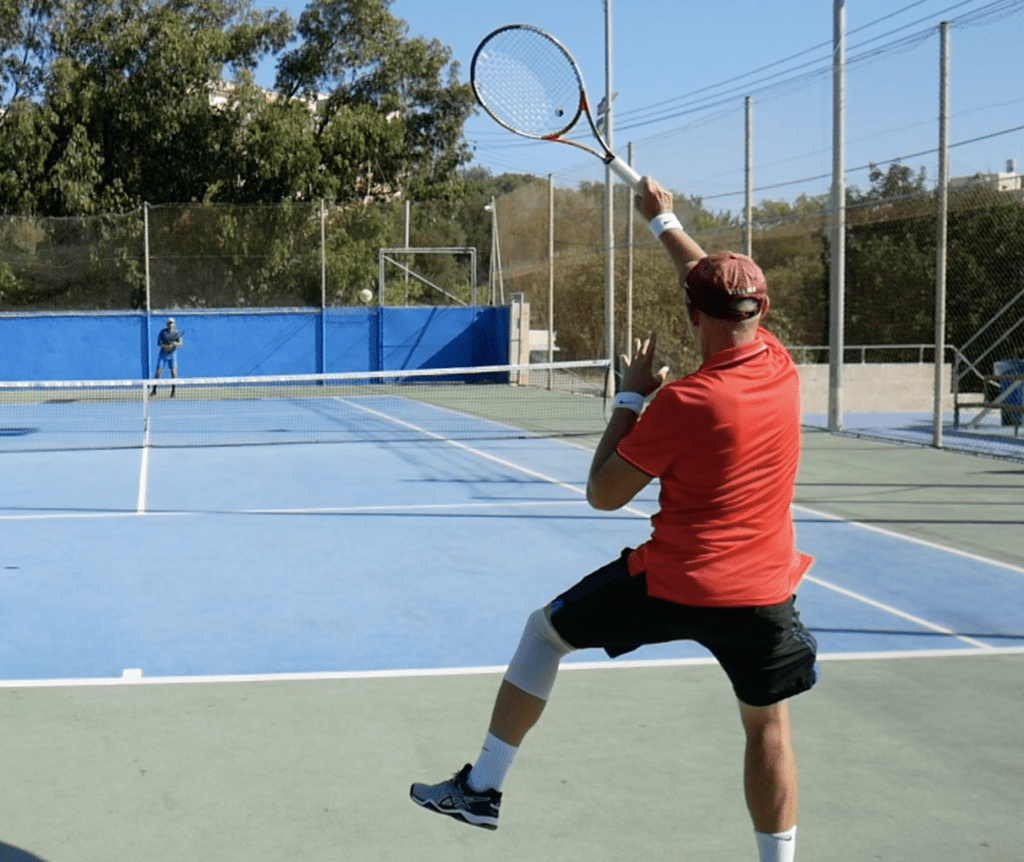


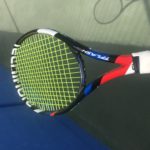

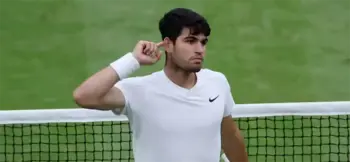
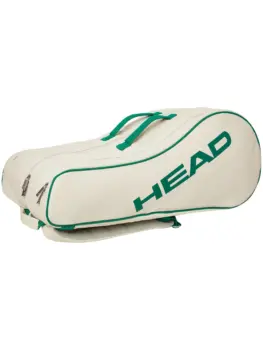

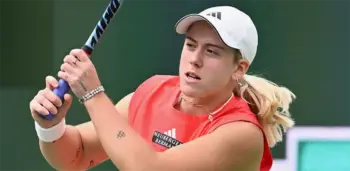

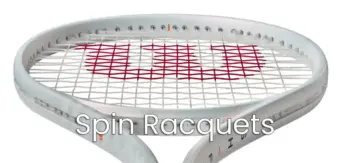
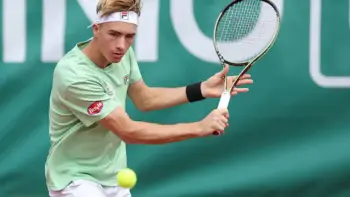

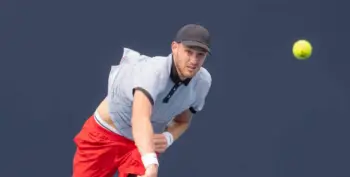
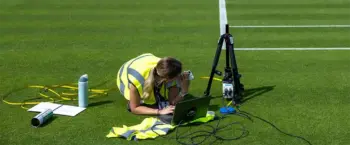

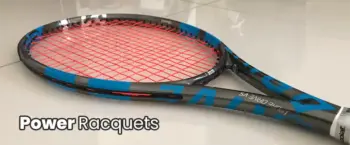

What I’ve found, moving from a heavier and stiffer racket (PAT) to lighter more flexibel racket (360 speed pro) is that directional control also suffers.
No matter the pace directed at me (well to a point of course) I could dictate the direction with great accuracy. Now I’m not sure if its the weight or the flexibility or the combination, but my shots land just beyond the sigles side lines when goign straight an uncomfortable amount of times, especially on heavy balls from my opponent.
I’m otherwise happy with my switch (maneuverability, drop-shots + arm health are a big plus), but this lack of directional control is giving me serious doubt. I hope it is temporary until I adjust…its been some weeks already though :-(
I think this is a highly personal thing, but I can see your point. I like a relative high weight for directing shots and taking balls on the rise. Really works for my game.
Have you added any lead tape to the frame? This might help. Sometimes you only need a couple of grams to experience a big change.
Maybe in relation to previous comment, I was wondering how you manage the transition of rackets each time. I’ve really struggled these past weeks even though I tried to pick a racket as similar as possible.
My arm is definitely better (sorry to hear about your wrist…I’ve not had those issues, though I did go for multifillament to speed up arm recovery), but my tennis rating/level has taken a severe beating due to the decrease in power and directional control against hard hitters.
Would love to get some tips (obviously I’m practising a lot :-)
Transitioning between racquets is never easy actually. The more I groove with one frame for tournament play, the more difficult it is to conduct a review of a frame and play well with it. Luckily, I have learned to adapt my technique somewhat in between the different types of racquets and since I have been doing this for so long, I tend to “read” how a racquet plays and what I need to do to adapt to it fairly quickly. But I would not recommend to anyone to change racquets as often as I do, it really tends to screw with your head and arm!
My tip in general is to learn how to play with a relatively heavy and low-powered racquet and always hit the ball well in front because that tends to reduce risk of arm injuries and also teach you to always move your feet. When I try to get too much into a “modern game” I fall into the trap of not moving properly and often up on my back foot against good players.
Like I wrote in my previous reply, I think lead tape can really help you to direct pace better with the 360 Speed Pro. It did for me. Good luck!
Thanks for the reply. Good to know I should be patient :-)
I’m going to hold off using lead for now…I’m kind of liking what the reduced weight has done for my returns and volleys, but if my groundstrokes don’t improve to my old level I’ll definitely try it!
Great article.
I recently decided to stick with my Head IG Prestige Pro for pretty much the reasons set out in your last comment, TennisNerd. Provided my footwork is good, and I’m able to take a good swing, the weight and solidity of the racquet lets me hit a clean and ‘pure’ shot-I know exactly where the ball will go, and how good a shot it is all depends on how well I have hit it. Basically, what I put into it, I’ll get out of it.
I flirted with the 2015 Blade 98 (18×20) which I love. It’s light but deals well with heavy balls, and provides superb control and just the right amount of power. But the Ig Pro just edges it for me.
Does flexibility of a racket proportionally/directly affect comfort and control?
My previous usual racket was a moderately firm beginners’ Babolat frame, 105sq.in / 260g / 65RA unstrung, which I enjoyed without knowing much about specs. Following advice that my level needed a heavier racket, I bought a Head Youtek Radical Pro on discount. Oddly it made my wrist feel very sore and felt hard to control, so I switched back. Then 3 months ago I picked up the one-handed backhand and coincidentally broke the Babolat racket, so I switched to a Prince Tour 95 (2014, I think – not Textreme) racket.
I understand that flexible rackets are usually not particularly powerful, but the Radical was both of those things without being heavy, just really hard to control. Are my observations on these rackets normal and is there a way to find either more power from the Tour or more control from the Radical, either by changing my technique or the rackets?
Thanks
Hi Jonas,
Great articles, this one and the previous one with the powerful racquets. Congrats!
What do you think about Wilson Pro Staff 97 2015 (315g), the black and red one? What is your oppinion about this racquet?
It is a good racquet for a two handed backhand, even if it has a 97 head size?
It is a control racquet, a precision racquet or a powerful one?
It has a nice feel on the forehand side.
Thank you!
Hi,
Thanks! I was never a big fan of the Pro Staff 97, I preferred the response of the Pro Staff 97S in that case.
I would say it is more of a control racquet with a bigger head size, but I always felt that the stringbed was a bit unpredictable with that one.
If you want a Wilson I would go with the Ultra Tour or the Blade 98 (2015, not CV!). OR the Pro Staff RF97 if you can handle it! :)
Cheers / Jonas
You guys ever think, maybe, we should just give up on the small head size mid flexi racquets that are not hollow and act like these do not exist anymore? Just, maybe, not think about getting injured and it won’t happen. Just, possibly, stop whining about the good old days, the thin box beamed beauties and get on with it? I play with a lot of young kids at like 14 to 18yrs old and they whack the cover of the balls with the new spin machines that I cannot even begin to control… I think, maybe, I need to stop thinking of the holy grail being out there somewhere, maybe I just need to get a new racket, play, suffer for a while and then it’ll all start working for me too… I do not know, maybe I’ll just stay nostalgic and never catch up to the modern game.
Then again, every time I watch the guys that are virtuosos with too much money and too much talent, I see them using the stuff of legend, the sticks we can’t really buy, or, are just not prepared to dole out that much money for (even though they cost the same amount of $ to make), and think to myself, naaaaaaaaaah, those are the real sticks and when you feel the ball on the strings, that’s the real tennis feeling… Can’t really say, but it seems I am staying a racquetoholic for life :-)… for better of worse
Hi Uros,
I think there are arguments for both sides of the story. I know plenty of young, hard-hitting guys that play with PT57A or similar, thin-beamed flexible control racquets. But I also know guys that blast the ball with a stock Pure Aero or Blade. Whatever works for you. A racquet setup is always a personal thing.
I love more flexible control racquets myself and will stick with them for my tennis game. Although it is always fun to test a rocket launcher from time to time.
Cheers / Jonas
HI, sometimes it is hard to make the club players believe this, 90% of the injuried club players use this kind of racquet (mainly babolat) I already had TE with babolat, now I’m playing xt prestige pro with poly and after long plays I still feel some discomfort, wich racquets are below 63RA but with some decent power ?
Hi Lucas,
Prince makes a lot of arm-friendly racquets these days. Check out the Beast or Phantom line-up for example.
They have decent power and are quite arm-friendly. I can also recommend an Angell K7 Red for example.
Good luck / Jonas
Hi
Some of your favorite frames was Tecnifibre dc 315.
Are you planning to do a review of the new tfight 315 xtc?
I ordered one to my self. planning to experiment with some light customisation.
What kind of lead tape are you using?
Hi,
The Tecnifibre Tfight 315 Ltd was my racquet of choice for a while since it is a copy of the PT57A and a nice, controlled and flexible frame.
The DC 315 is something else, it is not a thin-beam and flexible racquet like the Tfight Ltd.
I would like to try the new 315 XTC yes. But might be a month or three into the future. Not sure yet.
When it comes to lead tape I have used both Gamma and Tourna lead tape. Right now I have a reel of Tourna and that works well for me.
Good luck / Jonas
Dear Sir/Madame Nerd
Really nice and interesting website. I am looking for some thin beam and low flex frame and almost deciced that I have to customize one. I’ve tried Yonex VCORE 97 Pro 310g, Pro Staff 97 315g,Phantom 100 a Pro 100P many more and even Head Graphene Touch Speed MP and 3360 Speed Pro. Despite I really prefer beam max 20mm and flex very close to 60. Key question is if you could kindly recommend me customize-friendly racquet. Flexible, thin, not so heavy as prostock after that.
Have you any experience with customized racquet and warranty?
Thanks a lot
Adam
Hi Adam,
Thanks. If you like a thin beam you should try the Prince Phantom Pro 93P. Does not need much customization.
There are other interesting options too: Dunlop Srixon CX 200 Tour, Tecnifibre Tfight 315 Ltd, Angell TC 97 Custom, Donnay Pro One 97 Hexacore.
These are all good platform racquets with relatively thin beams.
Good luck! / Jonas